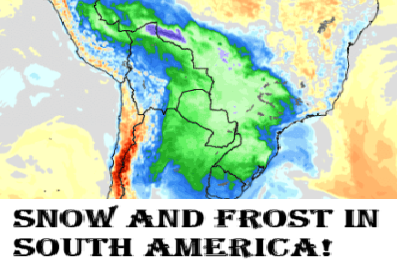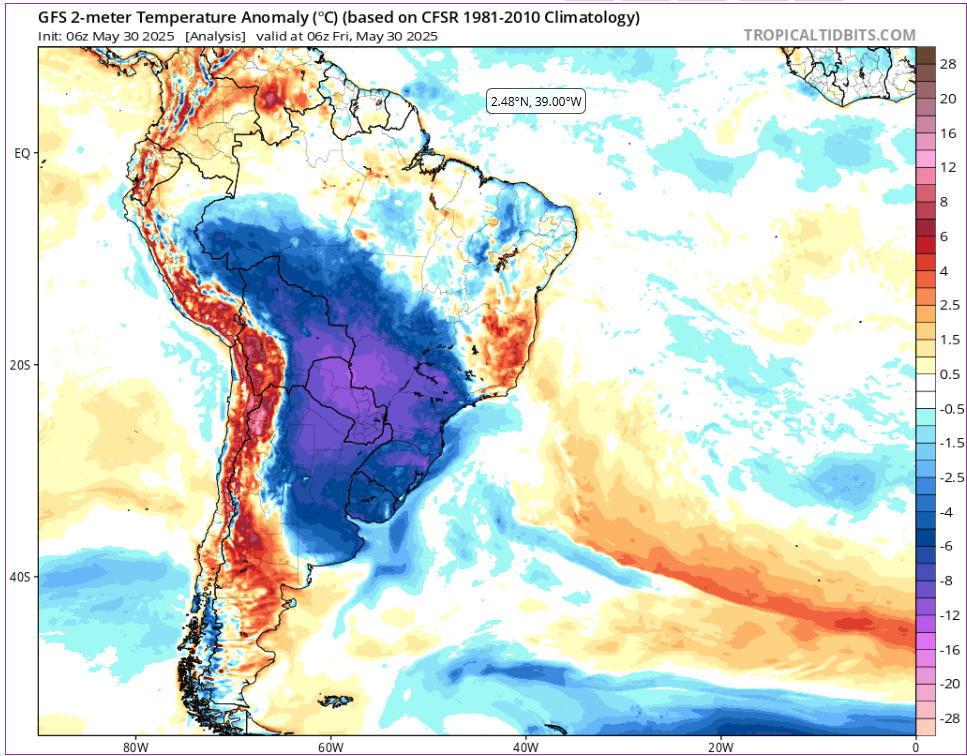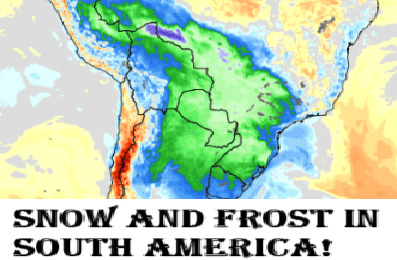
In an extraordinary meteorological event, South America is experiencing one of its most severe autumn coldwaves in decades. From the temperate zones of southern Chile and Argentina to the tropical regions near the equator, temperatures have plummeted well below seasonal norms, causing widespread disruptions and raising concerns about climate variability.
Argentina and Paraguay: Energy Strains Amidst the Freeze
The coldwave has extended into Argentina and Paraguay, where temperatures have similarly dropped below freezing in several regions. In Argentina, the sudden surge in energy demand led to supply cuts to numerous gas stations and industries across several provinces to prevent outages in households. Paraguay, unaccustomed to such early-season cold, has also reported temperatures dipping below 0°C (32°F), affecting daily life and agriculture
Brazil: Southern States Experience Rare Frost
In Brazil, the southern states, including Rio Grande do Sul and Santa Catarina, have experienced rare frost conditions. The cold air mass, originating from Antarctica, collided with warm air from the Amazon, leading to heavy rainstorms and a significant drop in temperatures. Porto Alegre, the capital of Rio Grande do Sul, recorded temperatures as low as 9.8°C (49.6°F), with nighttime lows reaching 7.1°C (44.8°F). These temperatures are notably lower than the seasonal averages, marking a significant cold anomaly for the region.
Peru and Ecuador: Tropical Regions Not Spared
Even tropical regions near the equator have not been immune to the coldwave. In Lima, Peru, temperatures have hovered around 17.6°C (63.7°F), slightly below the typical May averages. Quito, Ecuador, situated near the equator, has experienced temperatures as low as 11.3°C (52.3°F), indicating the extensive reach of the cold air mass. While these temperatures may not seem extreme, they represent significant anomalies for these typically warm regions.





























